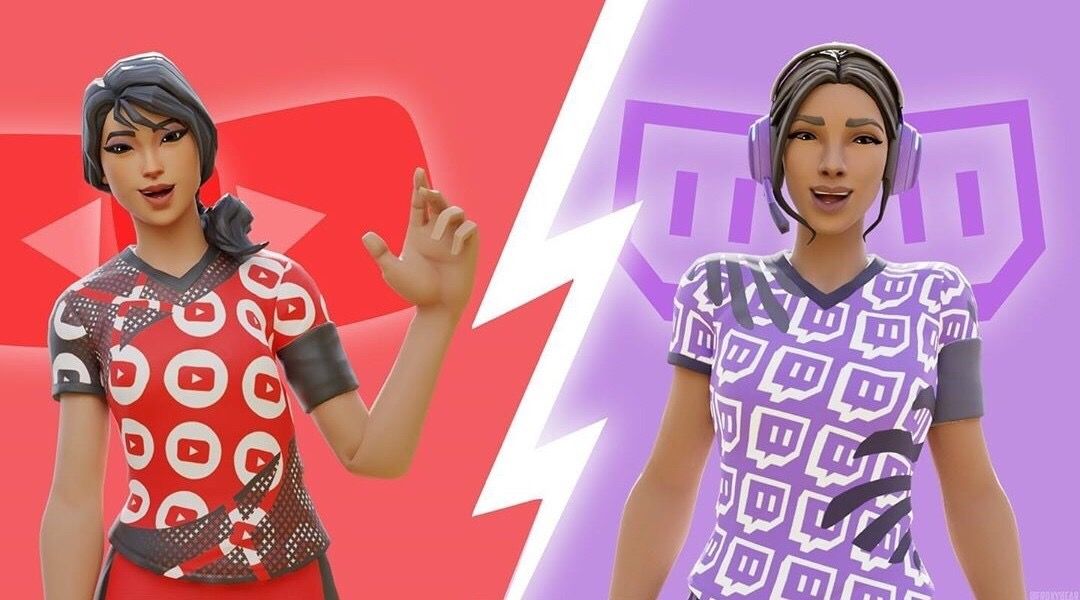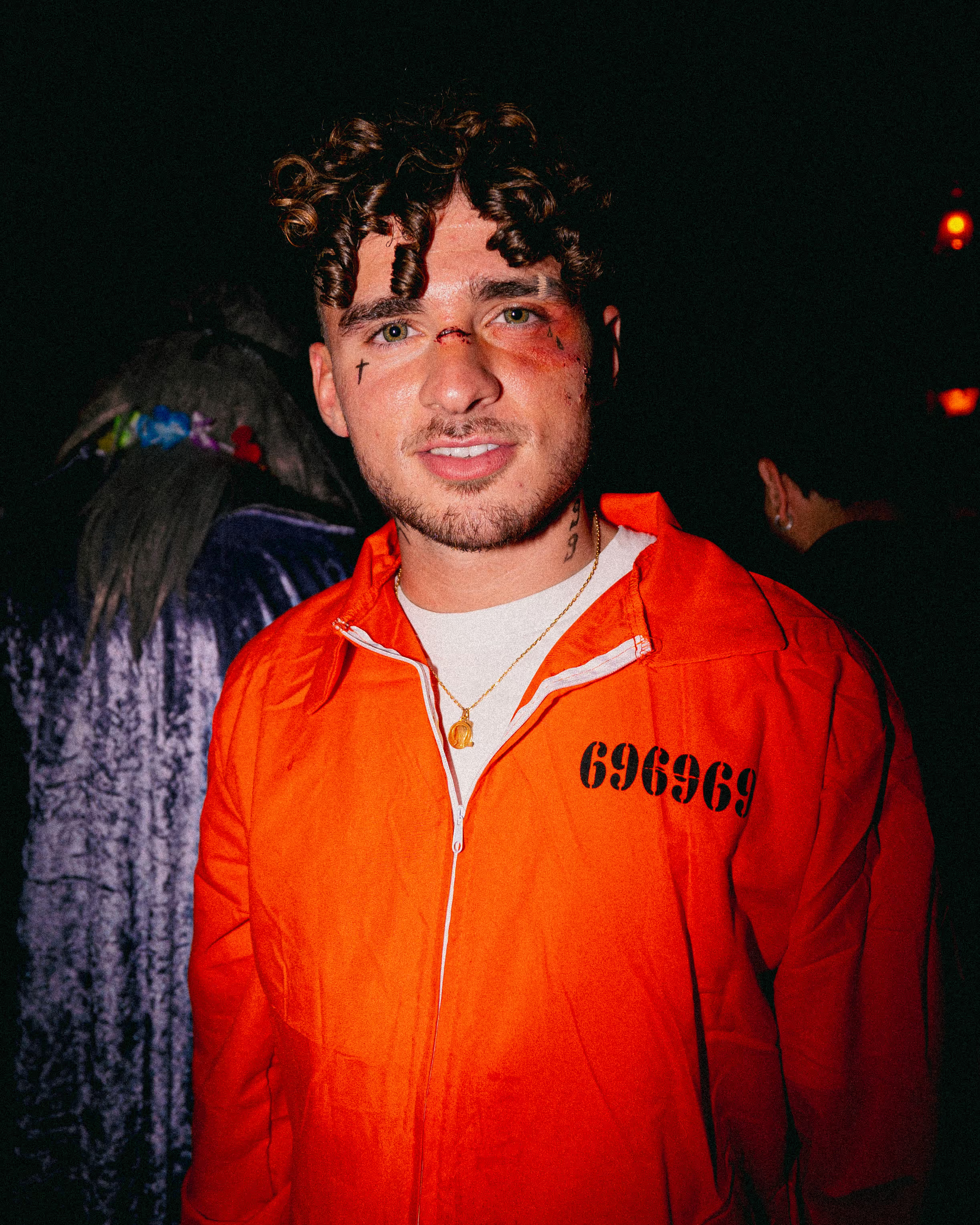Quelles différences entre YouTube et Twitch ?
Découvrez les principales différences entre Twitch et YouTube et comment choisir la bonne plateforme lancer et diffuser un live stream.
August 22, 2025

Le monde du streaming a connu une croissance fulgurante ces derniers temps, alimentée par l'émergence de plateformes de premier plan comme Twitch et YouTube. Ces plateformes ont ouvert un univers de possibilités pour les créateurs de contenu et diffuseurs, en facilitant leur connexion avec un large public et de façon encore jamais vue.
Mais en quoi ces deux réseaux sociaux diffèrent-ils ?
Si vous envisagez de vous mettre au livestream et que vous ne savez pas quelle plateforme choisir, cet article vous aidera à comprendre les principales différences entre Twitch et YouTube. Que ce soit pour ce qui est de l'expérience utilisateur, de l'audience cible ou des opportunités de monétisation, nous vous dévoilons les critères clés à considérer pour identifier la plateforme la plus adaptée à votre marque.
Présentation de Twitch et YouTube
Avant de faire la comparaison de Twitch et YouTube, il est crucial de comprendre ce que chaque plateforme a à offrir.

Lancé en 2005, YouTube est un site de partage de vidéos qui permet aux utilisateurs de visionner, liker, partager, commenter, et de télécharger leurs propres vidéos. Bien que la plateforme soit majoritairement connue pour ses contenus pré-enregistrés tels que les tutoriels, vlogs, essais vidéos et sketchs, elle propose également un service de diffusion en direct : YouTube Live. Ce service offre aux créateurs la possibilité de diffuser du contenu en temps réel, tandis que leurs abonnés peuvent interagir via le live chat.
Depuis 2021, le livestreaming a pris une place de plus en plus importante sur YouTube. D'après BusinessofApps, plus de 5 milliards d'heures de contenu en direct ont été visionnées sur YouTube en 2021 seulement. Statista note également que 5% des spectateurs de Twitch ont aussi regardé un livestream sur YouTube pendant la même période.

Quant à Twitch, cette plateforme plus récente, apparue en 2021, s'est rapidement focalisée sur la diffusion en direct, notamment dans le domaine du gaming. Aujourd'hui, Twitch domine le marché du livestreaming avec plus de 18,5 milliards d'heures de contenu visionnées depuis le début de l'année. Bien que d'autres types de contenu aient vu le jour sur la plateforme, le gaming reste prédominant, attirant une grande partie de la communauté de Twitch.
Quelles sont les principales différences entre Twitch et YouTube ?
Si vous hésitez entre YouTube et Twitch pour positionner votre marque dans le monde du livestreaming, plusieurs éléments doivent être pris en compte. En dépit de leurs similitudes en matière de diffusion en direct, de publicité et de partenariats, ces deux plateformes proposent des expériences et des perspectives de croissance distinctes.
Voici les différences clés entre Twitch et YouTube :
L’expérience de navigation
Twitch et YouTube, bien qu'étant tous deux des moteurs de recherche, ont des approches différentes pour recommander du contenu à leurs utilisateurs.
Twitch, principalement conçu pour le streaming en direct, tend à mettre l'accent sur les streamers les plus populaires. Son interface est optimisée pour la découverte de nouveaux streamers, avec une fonction de recherche basée sur les jeux ou types de contenu spécifiques comme le speedrun ou le contenu IRL (In Real Life). Cependant, la plateforme ne permet pas aux utilisateurs de personnaliser leurs vignettes.
D'un autre côté, bénéficiant du support de Google, YouTube rend la recherche plus accessible pour les débutants grâce à une fonctionnalité de vignette personnalisable, qui offre aux créateurs plus de contrôle créatif et de possibilités pour promouvoir leur contenu. Sa fonction de navigation est conçue pour rechercher des vidéos, des créateurs ou des comptes de marque YouTube sur des sujets précis. En ce qui concerne la recommandation de contenu, YouTube privilégie la pertinence du contenu en fonction des habitudes de visionnage de l'utilisateur.
Ainsi, ces deux plateformes offrent des expériences distinctes en termes de recherche et de découverte de contenu, avec Twitch favorisant les streamers populaires, et YouTube mettant l'accent sur la pertinence du contenu pour le spectateur.
Les règles de contenu
En ce qui concerne la régulation du contenu, Twitch et YouTube ont des exigences différentes.
Twitch, bien que moins strict que YouTube sur le type de contenu diffusé, impose tout de même certaines limites. Étant donné que les flux en direct sont plus difficiles à modérer, Twitch n'impose pas le même niveau de validation que YouTube pour ses vidéos préenregistrées. Cependant, cela ne signifie pas que tout est permis sur Twitch. La plateforme interdit formellement la nudité, le contenu sexuellement suggestif, la violence et les discours haineux.
De son côté, YouTube a des règles de contenu plus rigoureuses. La plateforme a une tolérance zéro pour le contenu suggestif ou violent, même s'il n'est pas explicitement graphique. En cas de violation de ses règles, YouTube applique un système de trois avertissements avant de prendre des mesures, tandis que Twitch a la réputation d'interdire sans préavis ses créateurs, qu'ils aient des contrats ou non.
En somme, les deux plateformes présentent des différences notables en matière de directives de contenu, YouTube étant plus strict, tandis que Twitch se montre parfois plus sévère dans l'application de ses règles.
L’audience et la croissance
En ce qui concerne la croissance et l'audience, YouTube et Twitch offrent des opportunités et des défis uniques.
Grâce à un algorithme efficace, YouTube facilite la croissance rapide des chaînes des petits créateurs. Cependant, Twitch, avec une approche davantage axée sur les streamers de contenu populaires, offre des opportunités de croissance plus limitées pour les nouveaux venus.
Néanmoins, en ce qui concerne l'audience et le temps de visionnage, Twitch prend le dessus, avec 3,3 millions de téléspectateurs simultanés en 2022 et un total impressionnant de 21 milliards d'heures de contenu visionné. Cette croissance a été en grande partie alimentée par la pandémie. Par comparaison, YouTube, dans sa catégorie Gaming, a comptabilisé 705K téléspectateurs simultanés et 10 milliards d'heures de visionnage sur la même période.
Concernant la démographie, YouTube attire une audience majoritairement âgée de 25 à 44 ans, avec 80% ayant visionné au moins une vidéo au cours du mois. Sur Twitch, l'audience est plus jeune, avec 75% des utilisateurs âgés de 16 à 34 ans.
Quant aux possibilités de croissance, YouTube, grâce à son algorithme, favorise la découverte des petits créateurs par de nouveaux utilisateurs, tandis que Twitch tend à privilégier les streamers qui ont déjà une communauté importante. Cependant, Twitch exige un engagement plus fort de la part de ses utilisateurs, nécessitant des live streams réguliers et une interaction avec les abonnés pour développer une chaîne.
La monétisation et les partenariats
Twitch et YouTube présentent une variété d'options pour permettre à leurs créateurs de contenu de générer des revenus. Ces options incluent les revenus publicitaires, les partenariats avec des marques, les abonnements, les dons et même la vente de produits dérivés.
Twitch a élaboré un éventail d'options de monétisation incluant les abonnements payants à certains créateurs via le service Twitch Prime, les dons en direct lors des livestreams, les publicités sponsorisées et même les programmes d'affiliation. En outre, Twitch facilite l'accès au statut d'affilié ou de partenaire. Ses critères d'éligibilité sont en effet moins stricts en termes de nombre d'abonnés et d'heures de visionnage que ceux de YouTube. Ce système à deux niveaux permet aux streamers de commencer plus facilement à monétiser leurs chaînes.
YouTube permet aux créateurs de bénéficier de la publicité contextuelle grâce à Google Adsense, ce qui peut nettement améliorer le taux de conversion. De plus, YouTube reverse 55% des revenus publicitaires à ses créateurs, ce qui constitue un avantage non négligeable. La plateforme offre également des fonctionnalités telles que Super Chat et Super Stickers, qui permettent aux spectateurs de soutenir leurs créateurs préférés en envoyant des messages en surbrillance lors des lives. À l'inverse de Twitch, YouTube propose uniquement le programme YouTube Affiliates pour les youtubeurs désireux de monétiser leur contenu.
Lequel est le meilleur : Twitch ou YouTube ?

Il n'y a pas de réponse absolue à la question de savoir si vous devriez opter pour YouTube Live ou Twitch pour vos diffusions en direct. En effet, les deux plateformes présentent des avantages indéniables. Alors que YouTube peut se vanter d'avoir un nombre plus élevé d'utilisateurs actifs quotidiens, Twitch règne en maître incontesté lorsqu'il s'agit de livestreaming, surtout dans le domaine des jeux vidéo.
Si votre objectif est de toucher une audience jeune et de créer une communauté passionnée autour de votre marque, alors Twitch pourrait être le meilleur choix. Cette plateforme se consacre entièrement au livestreaming et offre de nombreuses opportunités d'interagir avec votre public.
Quant à YouTube, bien que son engagement croissant pour les formats en direct soit notable, la plateforme reste principalement orientée vers la diffusion de vidéos préenregistrées et éditées. Elle est largement appréciée des créateurs de contenu en raison des nombreuses opportunités de monétisation qu'elle offre. De plus, pour une marque, YouTube peut s'avérer être un allié précieux. En effet, grâce à l'optimisation pour les moteurs de recherche (SEO), une marque a la possibilité d'accroître la visibilité de sa chaîne sur le moteur de recherche de Google, assurant ainsi une plus grande portée.
{{cta}}








.avif)




